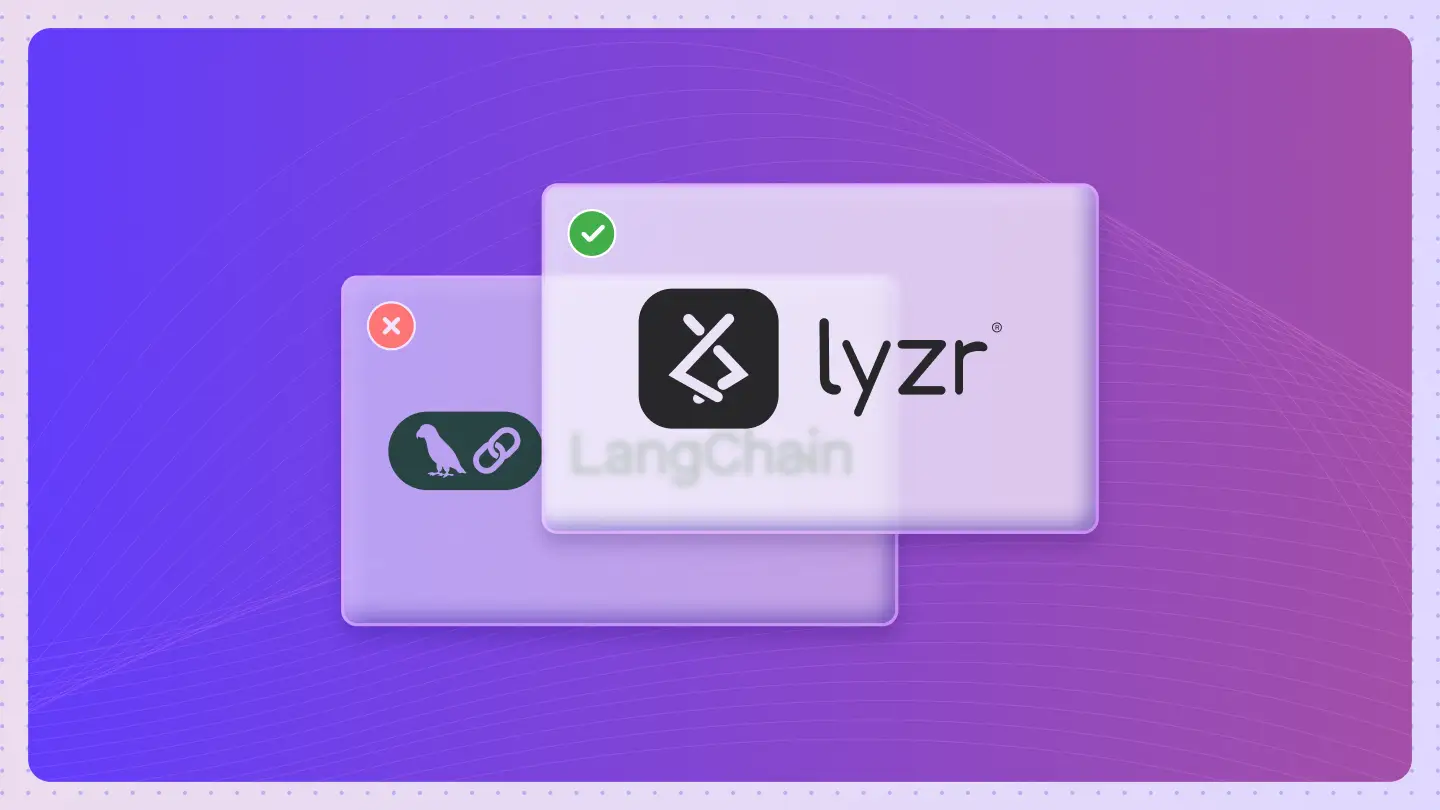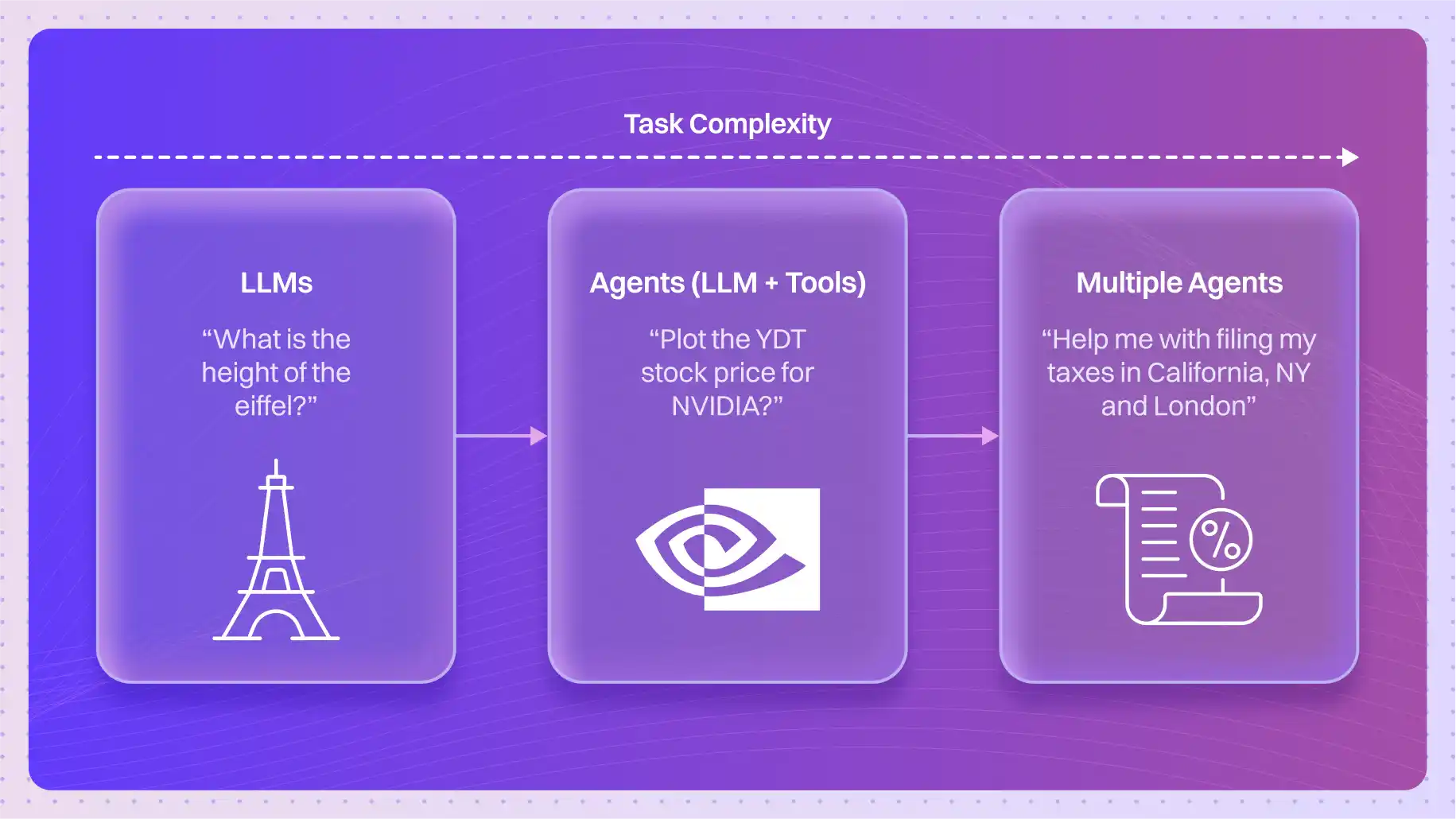Table of Contents
ToggleThis is the conversation every boardroom needs to have next.
Not “How do we use AI?” but “How do we build Agentic AI Architecture?”
The real challenge for HR leaders, SaaS founders, and the entire C-suite isn’t adopting another tool. It’s rethinking how the business actually operates.
Right now, most companies are doing the same thing: carrying water in a leaky bucket.
You invest in a powerful AI model it generates text, classifies data, drafts code and it does that one task incredibly well. Then it stops. It waits for the next prompt.
The output is great…
but the workflow? Completely broken.
A human has to grab that output, move it somewhere else, feed it into the next step, and hope nothing gets lost in the handoff. You lose time, context, quality every single time.
So what do we do?
We stack more single-task models and glue them together with brittle automations.
It works, until one tiny thing breaks and the whole Rube Goldberg machine falls apart.
This is exactly where the mental shift needs to happen.
The future isn’t better single-task AI.
It’s AI that can think, plan, and act across an entire workflow autonomously.
We’re moving from reactive copilots to proactive, goal-driven digital agents.
And the backbone of that shift is the Agentic AI architecture.
Why Reactive AI Is a Roadblock
You know the pain. You’ve seen the impressive demos of large language models (LLMs) drafting a perfect email or summarizing a 100-page report. Yet, when you try to apply this to a complex business processsay, “Automate our new employee onboarding, end-to-end”the single-function AI falls flat.
The reality of the old way is that most Generative AI is inherently reactive. It’s brilliant at the response but lacks the initiative. It cannot:
- Self-Plan: Break a high-level goal (like ‘increase user adoption’) into a sequence of sub-tasks (market segmentation, content drafting, campaign scheduling, performance monitoring, optimization).
- Use Tools: Connect securely to your CRM, HRIS, or financial systems (e.g., Salesforce, SAP, Oracle) to retrieve or input data without complex, custom API middleware.
- Retain Memory and Context: Remember that a user preference established last week should influence a decision made today, leading to repetitive or inconsistent actions.
This reliance on constant human intervention is not automation; it’s augmentation that still leaves the C-suite executive on the hook for orchestration, compliance, and end-to-end process management. The true cost of this friction the time wasted on handoffs and system integrationca n be staggering, reducing expected productivity gains by up to 40% in initial deployments, according to some analyses.
The Problem of the Single Agent
To visualize this, imagine a Single-Agent System trying to manage a full marketing campaign.
| Component | Single-Agent (Reactive) | Multi-Agent (Agentic) | Improvement |
| Goal Management | Waits for a step-by-step human prompt. | Breaks down ‘Launch Q4 Campaign’ into sub-goals: ‘Draft Content,’ ‘Segment Audience,’ ‘Schedule Emails,’ ‘Monitor ROI.’ | Proactive Planning |
| Data Use | Limited to the data in its immediate context window. | Accesses a shared Vector Store/Knowledge Graph for real-time customer data, product sheets, and historical performance. | Contextual Accuracy |
| Adaptation | Requires human to notice performance drop and re-prompt. | Monitors campaign metrics (e.g., click-through rates), detects underperformance, and automatically adjusts the email sequence strategy. | Autonomous Optimization |
[
The Turning Point: Agency is the Architecture
The core insight you need is this: Agentic AI is not just another model; it is an architectural paradigm shift. It moves AI from being a calculator that gives a single answer to a self-governing employee that achieves a goal.
An Agentic AI Architecture transforms the LLM from a passive brain into a fully capable entity with:
- Perception (Sensors): The ability to ingest and interpret data from multiple, diverse sources from a user’s natural language request to real-time sales data from a CRM integration.
- Cognition (Reasoning/LLM): The core intelligence that interprets the goal, creates a complex, multi-step plan, and selects the right tools for each step.
- Action (Tools/APIs): Secure, governed access to perform actions in the external world booking a meeting, updating a database record, or sending a notification via an internal messaging platform.
- Memory (Knowledge/Context): A persistent history of past actions, company policies, and external data that allows it to learn and maintain context across a long workflow.
This architecture is the steel frame that gives an agent its autonomy and its purpose. It’s the difference between asking a junior analyst to ‘draft a report’ (reactive) and asking a department lead to ‘handle Q4 planning’ (agentic). The second requires planning, cross-functional tool use, and autonomous decision-making.
The New Approach in Practice: Autonomous Orchestration
The practical power of Agentic AI Architectures is not in single-task automation, but in orchestration the ability to coordinate multiple, specialized agents to achieve a complex business outcome. This is how you finally fix the “leaky bucket” problem.
Think of a full-scale talent acquisition process. This requires:
- Talent Sourcing Agent: Scans internal databases and external platforms, using a semantic search engine to match candidates against the job description.
- Interview Scheduling Agent: Accesses the Hiring Manager’s calendar API to find open slots and autonomously coordinates with the candidate via email, handling all time-zone conversions and rescheduling.
- Compliance Agent: Audits the process in real-time against local labour laws and internal diversity policies, flagging potential bias before an offer is even made.
This is a complete, self-governing workflow. No manual handoffs, no lost context. A recent study highlights that autonomous agents can reduce the processing time for certain administrative tasks by over 90%, turning days of work into minutes. This isn’t just efficiency; it’s a fundamental change in the cost and speed of doing business.
The Multi-Agent Blueprint
For enterprise-level scale, you’re not using one agent; you’re building a multi-agent system, typically following a Hierarchical (Vertical) or Horizontal (Decentralized) pattern.
- Vertical Architecture: A single Leader Agent breaks the problem down, delegates sub-tasks to specialized Subordinate Agents (e.g., ‘Data Extraction Agent,’ ‘Compliance Agent’), and then synthesizes the final result. This is excellent for sequential, compliance-heavy workflows like financial audit or HR onboarding.
- Horizontal Architecture: Peer agents collaborate on a shared goal, exchanging information as needed. This is ideal for dynamic, creative, or research-intensive tasks like generating a new product marketing strategy.
The choice of Agentic AI Architecture is a strategic decision that directly impacts how your enterprise will scale, ensuring you can deploy solutions that are not just smart, but also reliable and auditable.
Lyzr: The Enabler of Your Autonomous Workforce
You need a platform built from the ground up to support this new architectural mandate a platform that shifts your focus from coding the connections to defining the outcome. That platform is Lyzr AI.
Lyzr is not just another Generative AI wrapper; it is the full-stack, enterprise-grade infrastructure that makes building and deploying secure, end-to-end Agentic AI Architectures a reality. Our mission is to move your organization from brittle proofs-of-concept to production-ready, autonomous agents that drive real ROI.
Why Lyzr is the Logical Next Step
Lyzr’s architecture is uniquely designed to solve the two biggest blockers to enterprise AI adoption: Complexity and Trust.
- Complexity Solved by Lyzr: Our product, Architect by Lyzr, is the world’s first Agentic App Builder. You simply state your high-level business goal in natural language (e.g., “Build an AI Sales Development Representative that qualifies leads from our CRM”), and Architect auto-generates the entire Agentic Orchestration. This includes creating the necessary sub-agents, defining the correct tool calls, and even building the front-end user interface all within a single, unified environment on the Lyzr Studio platform.
- Trust Solved by Native Guardrails: The power of autonomy must be balanced with responsibility. Lyzr is the first and only enterprise agent framework to natively integrate Safe AI and Responsible AI modules directly into its core agent architecture..
We understand that a CTO’s primary concern is data security. That’s why Lyzr offers deployment flexibility, including on-premise and private cloud options, ensuring your sensitive data and intellectual property remain 100% within your environment. This is a game-changer for regulated industries like finance and healthcare. See how our banking solutions and insurance applications are already leveraging this capability.
Whether you’re an HR Manager looking to automate the entire employee lifecycle or a SaaS Founder wanting to build a truly autonomous customer support system, Lyzr provides the architectural stability and the governance layer to scale your AI ambitions with confidence. You can explore the Lyzr Agent Framework for the technical deep dive or see our comprehensive documentation for developers for integration details.
Your next logical step is to stop experimenting with single-task AI and start building an autonomous workforce. Book a demo with Lyzr AI today to see Architect in action and define your first end-to-end autonomous workflow.
FAQs
What is Agentic AI Architecture?
Agentic AI architecture is a design framework that enables AI systems to operate autonomously, perceiving environments, reasoning through goals, taking actions via tools, and maintaining memory for context. It shifts AI from reactive tools to proactive entities capable of handling complex, multi-step tasks without constant human input, often using large language models (LLMs) as the core reasoning engine.
How does Agentic AI differ from traditional or reactive AI?
Traditional or reactive AI, like basic generative models, responds to single prompts but lacks planning, tool integration, and long-term memory, requiring human orchestration for workflows. Agentic AI, by contrast, self-plans tasks, adapts in real-time, and executes across systems autonomously, reducing handoffs and boosting efficiency by up to 90% in some processes.
What are the key components of an Agentic AI system?
Core components include: Perception (data ingestion from sources like APIs), Cognition (LLM-based reasoning and planning), Action (tool calls for external interactions), and Memory (persistent context storage like vector databases). These enable autonomy and adaptability in dynamic environments.
What are the types of Agentic AI architectures?
Common types include single-agent (one entity handling tasks independently, suited for simple workflows) and multi-agent systems. Multi-agent variants feature vertical (hierarchical, with a leader delegating to subordinates for sequential tasks) or horizontal (peer collaboration for dynamic, creative processes) patterns.
What are real-world use cases for Agentic AI in business?
In enterprises, agentic AI automates end-to-end processes like talent acquisition (sourcing, scheduling, compliance), marketing campaigns (planning, execution, optimization), and customer support (query resolution across systems). Companies like Adobe and Aramark report up to 80% auto-resolution rates, transforming operations in finance, HR, and sales.
How can businesses build and deploy Agentic AI architectures?
Start with platforms like Lyzr for no-code agent building. Focus on event-driven, cloud-native designs with guardrails for security and observability. Begin small with single agents, scaling to multi-agent orchestration for production.
Book A Demo: Click Here
Join our Slack: Click Here
Link to our GitHub: Click Here




